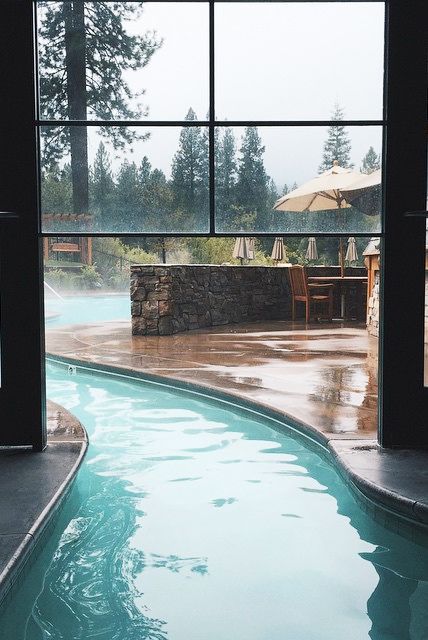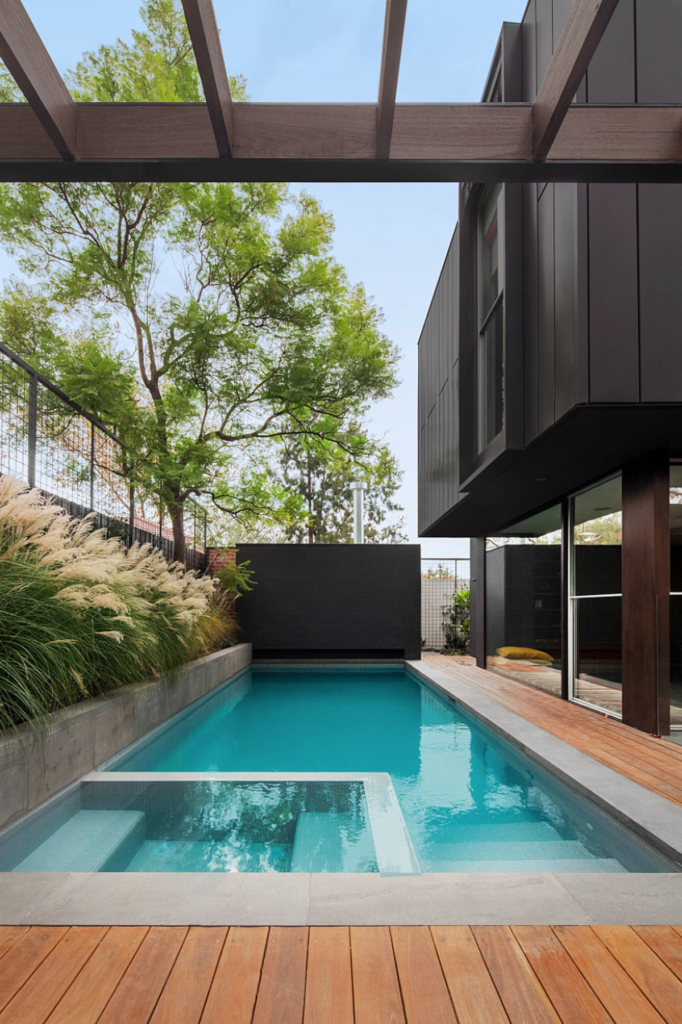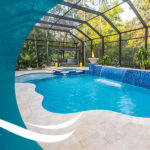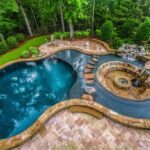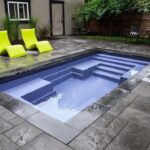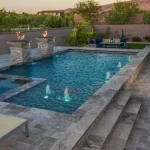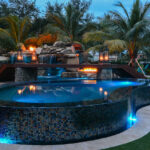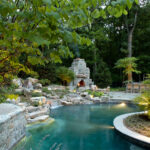When it comes to designing a pool, there are many factors to take into consideration in order to create a stunning and functional space. One of the first things to consider is the size and shape of the pool. The size of the pool should be proportionate to the size of the yard while also leaving enough space for additional amenities such as a deck, patio, or landscaping.
Another important aspect of pool design is the shape of the pool. Rectangular, oval, and kidney-shaped pools are popular choices, but there are also more unique shapes like L-shaped or freeform pools. The shape of the pool should complement the overall aesthetic of the backyard and blend seamlessly with the landscaping.
The materials used for the pool can also have a significant impact on the design. Options include concrete, fiberglass, vinyl, and tile. Each material offers different benefits in terms of durability, maintenance, and aesthetics. For a more luxurious look, consider using natural stone or tile for the pool coping and surrounding deck.
In addition to the pool itself, it’s important to consider the surrounding landscape and hardscape elements. Incorporating plants, trees, and shrubs around the pool can help soften the hardscape and create a more inviting and natural setting. Additionally, adding features like waterfalls, fountains, or fire pits can enhance the overall design and create a relaxing and entertaining space.
Lighting is another crucial aspect of pool design. Well-placed lighting can create a dramatic effect at night and make the pool area feel more inviting. Consider incorporating underwater lighting, landscape lighting, and path lighting to illuminate the area and create a warm and welcoming atmosphere.
Overall, pool design is a balance of form and function. By carefully considering the size, shape, materials, landscaping, and lighting, it’s possible to create a pool that not only enhances the backyard but also provides a beautiful and relaxing space for family and friends to enjoy.

